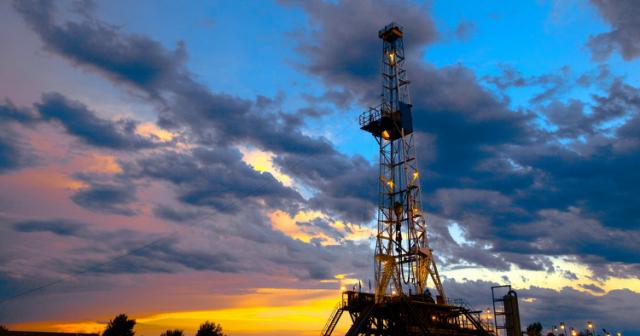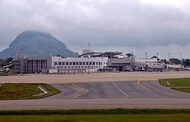For decades, the oil market has been dominated by Saudi Arabia, because it not only produced the most oil on a daily basis but also controlled the most oil underground. Those oil resources, known as reserves, gave the country leverage because it could ramp its output up or down to respond to market conditions. It often used that advantage to keep oil prices at a level of its choosing by putting pressure on other members of OPEC to follow its lead.
That said, there’s a new kid it town that, thanks to advances in drilling technology, now has more reserves than the Saudis. That surprising newcomer is none other than the United States of America, which, according to one estimate, has the world’s largest oil reserves.

Image source: Apache.
Drilling down into the numbers
According to a report by energy consultancy Rystad Energy, the U.S. holds 264 billion barrels of oil reserves, which includes oil from existing fields as well as a projection of oil from yet-to-be-discovered fields. Rounding out the top five are Russia (256 billion barrels), Saudi Arabia (212 billion), Canada (167 billion), and Iran (143 billion). Rystad found that the U.S. had already discovered 109 billion barrels of the reserves it used for its estimates.
Another of Rystad’s findings was the importance of shale in fueling America’s explosive growth in oil reserves, with these sources supplying 50% of the reserves. Of that amount, 60 billion barrels were in the state of Texas alone, thanks to the Eagle Ford and Permian Basin. Meanwhile, another 20 billion barrels of oil are likely underneath the state of North Dakota in its Bakken shale, according to estimates by leading developer Continental Resources (NYSE:CLR). On top of that, the country has several emerging shale plays in the Rockies and Oklahoma that are starting to become important drivers of reserve growth.

Image source: Apache.
Where’s all this undiscovered oil?
Another notable finding of the Rystad report is that what sets the U.S. apart from Saudi Arabia is a huge estimate for undiscovered oil supplies. In fact, if we readjust the numbers to only include oil reserves from existing fields and discoveries, the U.S. falls to second at 109 billion barrels, versus Saudi Arabia’s 168 billion. These findings imply that the U.S. still has 155 billion barrels of oil just waiting to be discovered, compared with just 44 billion barrels in Saudi Arabia.
The country has several potential sources of this undiscovered oil. For example, oil companies have continued to find onshore sources such as new shale plays or extensions of existing areas. Also, there’s likely plenty of oil currently hiding out in forbidden federal lands both onshore and offshore.
Shale plays in the U.S. have turned out to be the gift that keeps on giving. In the Permian Basin, for example, Pioneer Natural Resources (NYSE:PXD), which is the leading driller in the eastern portion of the play, believes that there could be as many as 160 billion barrels of oil equivalent resources in that legacy West Texas oil field. For perspective, that rivals the estimated oil reserves of Saudi Arabia’s monster Ghawar field. In fact, Pioneer Natural Resources believes that its acreage position alone holds 11 billion barrels of oil equivalent resources. Meanwhile, oil producers are still discovering new sources of oil in that field. Late last year, Apache (NYSE:APA) announced the discovery of the Alpine High play in a region that its peers had largely written off. By applying advances in shale drilling to an area where the industry had historically underperformed, Apache believes it found the keys to unlocking at least 3 billion barrels of oil.
Another area where there are likely ample supplies of undiscovered oil is on federal land. According to Harrold Hamm, the founder and CEO of Continental Resources, the government’s reluctance to lease federal land for drilling has been holding back exploration. Hamm said that “permitting is almost nonexistent,” which is a problem the industry is hoping President Trump will address by easing regulations and opening up more federal land for drilling under his America-first energy policy.
One area Trump can’t open up for new drilling quite so easily is in certain offshore regions, after his predecessor used a provision in a 1953 law to ban new leases on large swaths of federal waters for exploration, including the entire Alaskan Arctic. According to the U.S. Geological Survey, as many as 27 billion barrels of recoverable oil could be underneath the Alaskan Arctic. However, because former President Obama invoked this particular provision to ban new leases, it would probably take an act of Congress to reverse it so that President Trump or a future president can open up these areas to future drilling.
Investor takeaway
America has more recoverable oil than any other nation in the world, according to research from Rystad Energy. That said, oil companies haven’t found all that oil just yet, though there’s reasonable certainty that it exists, especially as producers explore around shale plays and on federal land that’s currently off limits. So for the U.S. to reach its full potential as an oil superpower, President Trump will need to make good on his America-first energy pledge by cutting regulations and opening up more areas to drilling, so that oil companies can go out and find the oil. Doing so will not only further loosen Saudi control on the oil market, but it will also keep more oil dollars in the United States.
Rare “total conviction” buy signal
The Motley Fool’s co-founders, David and Tom Gardner, rarely agree on a stock. But when they have, like on big winners Tesla and Netflix, their picks have beaten the market by 6X on average.*
That’s why many investors consider their joint stamp of approval to be a “total conviction” signal to buy. The Motley Fool recently announced a new “total conviction” stock.
*Returns as of February 9th, 2017.
Matt DiLallo has no position in any stocks mentioned. The Motley Fool has no position in any of the stocks mentioned. The Motley Fool has a disclosure policy.














